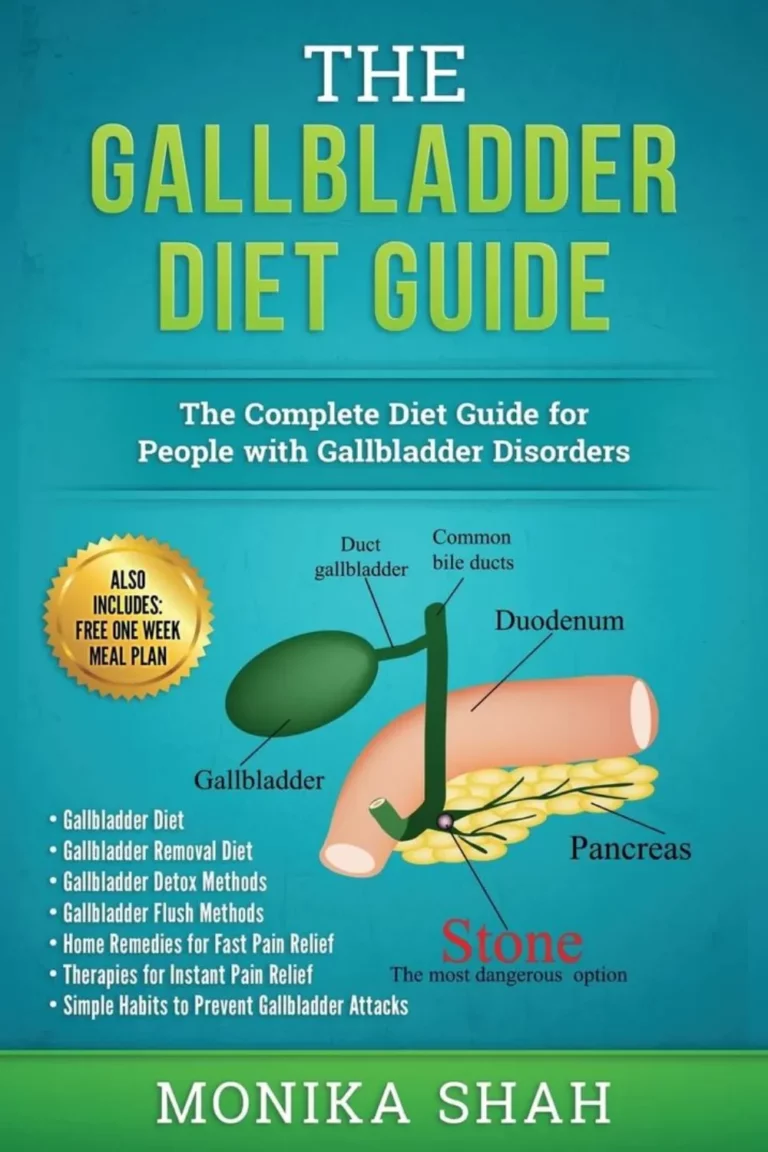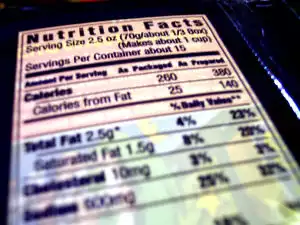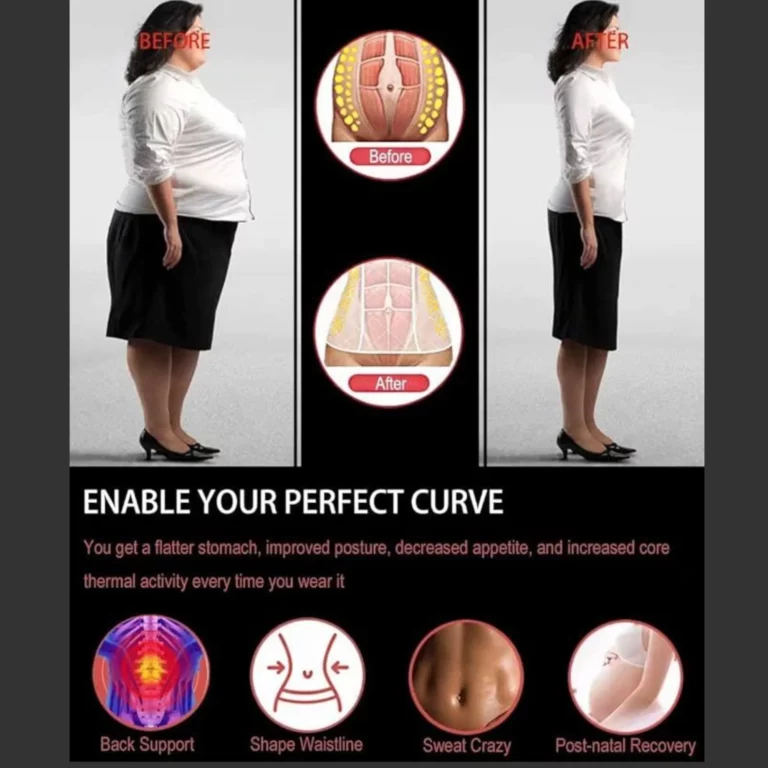They say abs are made in the kitchen, not just the gym.
Belly fat is more than just an annoyance that makes your clothes feel tight; it’s a ticking time bomb wrapped around your midsection, insidiously causing harm.
The connection between belly fat and serious health risks like heart disease underscores the urgency of shedding that stubborn midriff bulge.
Welcome to “Lose Belly Fat Fast: 10 Proven Tips from Health Experts,” your pivotal guide to understanding and combatting the perils of abdominal fat.
Through expert dietary advice, targeted exercises, and life-altering habits, we navigate the journey to a healthier you, delineating paths that go beyond quick fixes to ensure enduring wellness and fitness.
Table of Contents of 10 Proven Tips from Health Experts to Lose Belly Fat Fast
The Impact of Belly Fat on Health and How to Lose It
Visceral fat, more commonly known as stubborn belly fat, is recognized for its potential to cause a myriad of health issues, particularly relating to heart health.
Not merely a cosmetic concern, excess belly fat wraps around your internal organs, which could lead to serious conditions such as heart disease, type 2 diabetes, and heightened inflammatory states.
To battle this insidious form of fat accumulation, it is crucial to focus on sustainable weight loss through lifestyle modifications rather than transient solutions like crash diets, which may contribute to a cycle of weight loss and regain as well as emotional distress.
Reducing belly fat involves adopting a multi-faceted approach.
First, cutting down sugary drinks is key as liquid calories add up quickly and have a direct link to increased belly fat.
Emphasizing lean protein in your diet, such as that found in chicken breast, beans, and lentils, can aid in satiety and muscle building, helping to raise your metabolic rate.
Weight gain can also be mitigated by managing calorie intake, ensuring you’re not consuming more than your body can expend.
Incorporating quality sleep into your lifestyle is another pivotal strategy.
A lack of sleep can trigger hormonal imbalances that promote hunger and cravings, leading to excess caloric intake.
Furthermore, targeting a caloric deficit, typically achieved by consuming fewer calories per day than your body uses, is fundamental to promote fat loss.
Physical activity—specifically strength training—that targets the abdominal muscles can help to tone the area, aiding in a tighter appearance as excess weight is shed.
Regular exercise will also help to manage cortisol levels, which when elevated due to stress, can contribute to unwanted belly fat.
Regarding dietary changes, it’s not only about the reduction of certain foods but also about the inclusion of healthful options.
For example, replacing an alcoholic beverage with water or including a healthy fat like olive oil in your salad, are simple strategies that contribute to creating a deficit in calorie intake and reducing fat storage.
Aim to consume a balanced number of calories per day, tailored to your weight loss goal and activity level.
This means considering the grams of protein necessary to maintain lean muscle mass while losing weight and the total calories required to support essential body functions.
Tackling the extra weight around the midsection isn’t just an aesthetic pursuit but a meaningful step towards a healthier life.
A healthy weight not only contributes to a positive self-image but significantly cuts down the risk of developing health issues associated with obesity.
By setting a realistic weight loss plan, incorporating regular strength training, and potentially lifting heavy weights, you empower yourself to chip away at the belly fat storage, heading towards a healthier future.
##_ Understanding the Link Between Excess Belly Fat and Health Issues
Excess belly fat isn’t merely a nuisance; it’s a health hazard.
This particular type of fat, known as visceral fat, is nefariously linked with an array of health complications.
The health risks span from insulin resistance and type 2 diabetes to heart disease as it secretes inflammatory substances that affect the body’s normal hormonal functions.
Furthermore, the association of adipose tissue around the midsection with an increased disease risk is due to its unique ability to provoke an inflammatory response.
Every layer of extra fat in the abdominal area may increase inflammation and overall health risk.
While a certain amount of fat is necessary to cushion and protect vital organs, an overload, particularly in the belly region, becomes a precursor to serious health implications.
Notably, the link between belly fat and health issues isn’t uniform across all individuals.
Genetic factors, hormonal imbalances, and lifestyle choices play a significant role in the degree of risk.
It’s essential for anyone carrying excess weight, particularly around the abdomen, to consult with a healthcare provider to accurately assess their health risks and receive personalized recommendations.
Eradicating this tenacious abdominal fat requires concerted efforts that are specific and strategic.
Addressing aspects like diet quality, physical activity, sleep hygiene, and stress management can create a synergistic effect, tipping the balance from fat accumulation to fat reduction.
##_ The Importance of Maintaining a Healthy Weight for Overall Health
The journey to rid oneself of persistent belly fat is not just about achieving a flat stomach; it’s intimately linked with longevity and overall health.
Maintaining a healthy weight helps prolong life and supports a body free from the encumbrances of obesity-related complications.
The factors that contribute to weight gain are multifarious—from the modern diet rich in processed foods to lifestyle habits that encourage sedentary behavior.
To combat these trends, it’s crucial to espouse habits that promote a healthy weight.
Those seeking to lose belly fat can start by integrating more plant-based foods into their diet, ensuring that they consume an array of vegetables, fruits, whole grains, and lean proteins for balance and nutrition.
Adequate sleep is an often-overlooked component of weight management.
Sleep deprivation can disrupt appetite-regulating hormones, leading to increased hunger and a propensity for weight gain.
Additionally, engaging in regular exercise, particularly high-intensity interval training (HIIT), can accelerate fat loss by boosting metabolism and favorably tweaking body composition.
Having a healthy weight is more than just looking good; it’s foundational to avoiding chronic diseases like diabetes, high blood pressure, and heart disease.
These conditions significantly reduce quality of life and can become life-threatening if not managed promptly and effectively.
Hence, striving for a healthy weight is a critical goal for anyone seeking to optimize their health and well-being.
##_ How Excess Belly Fat Can Lead to Chronic Diseases Like Heart Disease
Belly fat poses a unique threat to cardiovascular health.
Individuals grappling with an abundance of deep-belly fat have heightened exposure to heart disease.
This visceral fat is not simply a static energy store but an active endocrine organ, capable of releasing harmful substances that can lead to chronic inflammation, a risk factor for cardiovascular disease.
The implications of carrying extra belly fat extend well beyond the number on the scale or the size of one’s waistline.
Visceral fat has been shown to influence lipid profiles negatively, contributing to the development of atherosclerosis—a condition characterized by the hardening and narrowing of the arteries—which can eventually lead to heart attacks and strokes.
Recognizing the gravity of this fat is imperative.
Unlike subcutaneous fat, which is located beneath the skin and often considered less hazardous, visceral fat’s proximity to vital organs amplifies its potential to cause harm.
It works its way into the liver, affecting how the body functions and responds to insulin.
Not only is there a surge in the overall fat levels in the blood, but there’s also an increase in insulin resistance, a precursor to diabetes and a well-known risk factor for heart disease.
Reducing this abdominal girth, therefore, is not just a function of vanity but a critical move toward preserving one’s health and mitigating the risk of chronic, life-altering diseases.
Making intentional lifestyle changes to lower belly fat can yield profound benefits for cardiovascular health, once again proving that when it comes to health, losing this stubborn belly fat is much more than skin deep.
The Role of Diet in Reducing Belly Fat
Aligning your meal patterns with your natural circadian rhythms can play a crucial role in minimizing fat storage.
Your body’s internal clock helps regulate metabolic functions, and by eating in sync with it, you may prevent increased fat retention.
It’s not only about what you eat but also when you eat it that matters in the battle against stubborn belly fat.
The Impact of Sugar and Refined Carbs on Belly Fat Storage
The modern diet’s high sugar and refined carbohydrate content is a key culprit in belly fat accumulation.
Excess sugar consumption can directly influence the storage of fat around the abdomen and liver, contributing to weight gain and elevating health risks.
Reducing the intake of foods laden with added sugars and refined grains is paramount.
The Importance of a Balanced Diet for Sustainable Weight Loss
A nutrition plan that is low in sugar and refined carbohydrates but abundant in lean proteins, fruits, and vegetables can significantly impact blood sugar and insulin levels.
It’s a robust method for reducing not only subcutaneous fat but also the more harmful visceral fat.
Here’s a table to illustrate a balanced diet for sustainable weight loss:
| Meal Time | Food Group | Example Foods |
| Breakfast | Protein | Eggs, Greek yogurt |
| Fiber | Oats, berries | |
| Lunch | Protein | Grilled chicken, quinoa |
| Vegetables | Leafy greens, tomatoes | |
| Dinner | Protein | Fish, tofu |
| Vegetables | Broccoli, bell peppers |
Carbohydrates should be consumed with mindfulness, treating them as an accompaniment rather than the main focus of the meal.
Maintaining this balance is more effective for weight management and can reduce the risk of fatty liver, diabetes, and heart disease.
The Benefits of Lean Protein and Vegetables for Weight Management
Incorporating lean proteins into your diet is fundamental to maintaining muscle mass while operating at a calorie deficit.
This is key for preserving strength and muscle tone during weight loss.
Moreover, proteins can help keep cravings at bay, enhance your metabolism, and result in a lower consumption of calories overall.
Effective Exercises for Targeting Belly Fat
Integrating strength training into your fitness regimen is vital for sustainable weight loss and belly fat reduction.
This type of exercise not only increases muscle mass, which elevates your resting energy expenditure, but it also directly contributes to belly fat loss.
Compound movements, such as squats, deadlifts, and bench presses, are especially effective because they work multiple muscle groups, including the core, simultaneously.
For those looking to specifically enhance their abdominal muscles, incorporating strength exercises like planks and medicine ball slams can help.
Clinical evidence suggests that a routine including aerobic exercises paired with strength training leads to a more pronounced decrease in unwanted belly fat, affirming its importance for a comprehensive weight loss plan.
The Role of Core Exercises in Toning Abdominal Muscles
Core exercises are the cornerstone of sculpting a toned midsection, as they focus on strengthening the entire set of muscles in the abdominal area, not just the surface-level ones.
By conducting a series of exercises like planks, reverse crunches, and V-ups, you engage and fortify your core, contributing to better posture, balance, and potentially alleviating lower back pain that can be exacerbated by excess weight.
While these exercises don’t directly target fat loss in the abdomen, they do shape and firm the abdominal muscles, which become more pronounced as overall body fat reduces through a combination of a healthy diet, regular cardio, and resistance training.
Aerobic Exercises for Overall Weight Loss and Reducing Belly Fat
Aerobic exercises are pivotal in melting away stubborn belly fat and achieving overall weight loss goals.
Activities such as brisk walking, jogging, cycling, and swimming elevate your heart rate and burn calories effectively.
These types of exercises, especially when performed consistently and combined with strength training, form the foundation of a highly effective belly fat loss strategy.
For individuals beginning their weight loss journey, incorporating low- to moderate-intensity aerobic exercises most days of the week is a safe and productive starting point.
It’s important to consult with a healthcare provider to determine the appropriate intensity and duration of exercises to avoid injury and ensure the path to losing belly fat is healthy and sustainable.
Table: Example Exercise Plan for Reducing Belly Fat
| Day 1 | Day 2 | Day 3 | Day 4 | Day 5 | Day 6 | Day 7 |
| Aerobic (Cardiovascular) Exercise: 30 mins of Running or Cycling | ||||||
| Strength Training (Upper Body): 30 mins with free weights or machines | ||||||
| Rest or light yoga/stretching | ||||||
| Aerobic (Cardiovascular) Exercise: 30 mins of Swimming or Elliptical Trainer | ||||||
| Strength Training (Lower Body and Core): 30 mins including planks and lunges | ||||||
| Aerobic (High-Intensity Interval Training): 25 mins of intense intervals | ||||||
| Rest or light active recovery like walking |
By sticking to a plan that combines both strength and aerobic training, you can expect to cut through excess belly fat and move steadily toward achieving a healthier weight and a defined midsection.
Remember to listen to your body, rest appropriately, and maintain a balanced diet alongside your exercise regimen to maximize the benefits of your efforts.
Lifestyle Changes for Losing Belly Fat
Embracing a holistic approach to shedding stubborn belly fat involves more than just counting calories and hitting the gym.
It requires comprehensive lifestyle changes that address key factors contributing to fat accumulation in the midsection.
One of the most significant changes is managing stress levels, which when left unchecked, activate the sympathetic nervous system, impairing your ability to burn fat effectively.
Proactive stress management strategies such as mindfulness, yoga, or even simple breathing exercises can mitigate these effects and promote a leaner physique.
Adopting healthy eating habits is at the core of any weight loss endeavor.
Aligning oneself with mindful nutrition by avoiding emotional eating plays a crucial part in combating belly fat.
An emphasis on portion control allows you to enjoy a variety of foods without tipping the scale towards weight gain, ensuring that your calorie intake supports fat loss rather than contributing to fat storage.
Committing to regular physical activity complements dietary efforts.
Engaging in exercises suiting your lifestyle is vital for cutting through layers of stubborn belly fat.
It’s critical to integrate both aerobic and strength-training activities into your routine, as they not only improve metabolism but also contribute to a leaner body composition.
Lastly, it’s important to implement smart calorie reduction strategies, focusing on an overall energy deficit, rather than futile spot-reduction efforts.
This approach to weight loss includes consuming a balanced diet, maintaining adequate hydration, and being mindful of all sources of calories – not just food but also drinks.
The Role of Sleep and Cortisol Levels in Belly Fat Accumulation
Quality sleep is a cornerstone of health and a weapon against belly fat accumulation.
The tightrope walk between adequate rest and chronic sleep deprivation is one that balances cortisol, the notorious stress hormone, which if in surplus, facilitates an increase in belly fat storage.
Aiming for 6-8 hours of uninterrupted sleep can be the difference-maker for those struggling to contour their midsection.
Dehydration too, can masquerade as hunger and elevate stress responses, nudging the body to cling onto belly fat.
What’s more, life stages such as menopause bring hormonal shifts, with estrogen levels dipping and often leading to increased abdominal fat.
Attention to hydration, sleep quality, and coping with hormonal changes plays a crucial role in sculpting a leaner belly and achieving a healthy weight.
The Benefits of Drinking Water and Avoiding Sugary Beverages
Rethinking liquid consumption is an effective tactic in the battle against belly fat.
Replacing high-calorie sugary drinks like sodas and fancy coffee concoctions with water not only helps control overall calorie intake but fosters optimal bodily function.
Water, the essence of life, keeps the body hydrated and satiated, potentially reducing the likelihood of overeating.
Excessive consumption of protein shakes and smoothies should be monitored unless they are intended to replace meals or needed for specific training and recovery.
Additionally, the act of tracking all liquid intake alongside solid foods can lead to revelations about calorie surplus sources, providing insight into how to best adjust one’s diets for success in weight loss and managing belly fat.
The Impact of Stress Levels on Weight Gain and Belly Fat Storage
A less visible, yet profoundly impactful lifestyle aspect on weight management, is stress.
Persistently high stress levels signal the body to increase the release of cortisol, promoting a higher percentage of belly fat.
Short-term stresses may be inevitable, but long-term stress management is critical for health and waistline management.
Incorporating practices like yoga, meditation, or even spending time in nature can act as valves to release stress and balance cortisol levels.
By moderating stress, you nip one of the root causes of belly fat storage in the bud.
Nourishing not just the body, but also the mind, ultimately benefits your waistline, paving the way for a healthier, happier frame of living.
Creating a Sustainable Weight Loss Plan
Embarking on a journey to lose unwanted belly fat and achieve sustainable weight loss is akin to preparing for a marathon.
It’s a pursuit of endurance, not sprinting towards short-lived results.
For substantial and lasting weight change, one needs to harmoniously blend various aspects of their lifestyle to carve out a weight loss plan that stands the test of time.
A balanced diet rich in lean proteins, whole grains, fruits, vegetables, and healthy fats sets the foundation.
Complement this with regular aerobic exercise such as walking, cycling, or swimming that boosts heart health and aids in calorie burn.
Strength training should not be overlooked; lifting heavy weights twice a week can rev up your metabolism by increasing muscle mass.
Amidst these shifts, never underestimate the power of quality sleep on health.
Ensuring 7-9 hours of uninterrupted sleep each night can profoundly affect weight loss success.
It’s all about the long haul.
Gradual weight loss, shedding 1-2 pounds per week, is not only healthier but more sustainable.
Radical diets and intense workouts may offer immediate gratification, but they often fall flat on long-term commitment.
Remember, consistency and longevity take precedence over rapid, fleeting results.
To better handle portions and calorie control, leverage digital helpers like food tracking apps.
Tools such as the Trifecta app provide a broad food database to help you monitor consumption accurately.
Consistent use of such tools educates you on calorie content and serving sizes, making it easier to stay within your target calorie range.
Ultimately, tailoring lifestyle modifications to suit individual preferences and capabilities is key.
Sustainable changes, experienced one small victory at a time, accumulate to impactful transformations.
The Importance of Calorie Deficit for Losing Belly Fat
Achieving a calorie deficit is the cornerstone of fat loss, particularly when it comes to the stubborn fat around the belly.
It’s a simple yet sometimes challenging principle: consume fewer calories than your body uses.
This deficit forces the body to tap into stored fat for energy.
However, the body is often stubborn, clinging onto fat reserves in areas like the belly for last.
This can lead to frustration as many anticipate quick results and quit their calorie deficit efforts prematurely.
The reality of weight loss is that, more often than not, fat reduction in areas such as the arms, chest, and face becomes noticeable first.
Belly fat often requires a longer commitment to a calorie deficit before it begins to diminish.
Transforming a soft belly into a toned one necessitates patience and persistence in maintaining that deficit long enough for the body to target that stubborn belly fat.
Losing belly fat should be a mantled quest for health, not a sprint for aesthetic gratification.
Drastic calorie restriction may bring fast results, but they are typically not sustainable and could lead to serious health issues.
Instead, embracing a modest calorie deficit over time encourages healthy weight loss and can help prevent the yo-yo dieting cycle that leads to regaining weight.
Achieving and maintaining a calorie deficit necessitates a strategic and thoughtful approach to nutrition and physical activity.
Stay on course, and time will reward you with the desired changes, particularly around the stubborn belly.
Understanding the Role of Basal Metabolic Rate in Weight Loss
Basal Metabolic Rate (BMR) is essentially the amount of energy expended while at rest.
It’s the base level of calorie burn that your body needs to maintain vital functions like breathing, circulating blood, and cellular repair.
Since BMR accounts for the majority of your daily calorie expenditure, it holds a significant role in weight management and loss.
Your protein intake can positively influence your BMR, as proteins require more energy for digestion, thereby increasing your calorie burn – a process known as the thermic effect of food.
Additionally, strategies like cold water immersion may enhance metabolism, potentially contributing to belly fat reduction by increasing the efficiency of the body’s fat-burning processes.
Upping your BMR will contribute to your weight loss goal by burning more calories at rest.
Incorporating at least 30 minutes of exercise each day, which can range from rigorous strength training to a brisk walk, is a sure-fire way to help raise that rate.
For those with sedentary jobs, standing desks offer an opportunity to increase energy expenditure throughout the day, encouraging more continuous fat breakdown.
The Benefits of Intermittent Fasting for Reducing Belly Fat
Intermittent fasting has emerged as a popular method for tackling excess weight, particularly when it comes to trimming belly fat.
This eating pattern cycles between periods of fasting and eating, which can extend beyond 10 hours and has been shown to promote lipolysis, the process where the body burns fat for energy.
The benefits of intermittent fasting go beyond caloric restriction.
By enhancing hunger cues and insulin sensitivity, this approach can improve how the body stores and utilises energy.
An eating window tailored to your daily schedule ensures that you can enjoy meals and snacks while still giving your body ample time to engage in fat burn.
Research suggests that the implementation of intermittent fasting can be a powerful catalyst for lipolysis, helping to limit the accrual of belly fat.
It encourages the body to adjust to burning fat as its primary energy source, particularly during the fasting windows.
However, it’s important to note that this approach isn’t universally suitable and should be adopted with consideration for individual health conditions and lifestyles.
In the reduction of belly fat, intermittent fasting may offer a structured framework that, when followed responsibly, can yield potent results.
It’s a construct that, alongside other healthy lifestyle practices, lends itself to a comprehensive strategy in combating excess weight and achieving a leaner midsection.
Track Your Progress and Stay Motivated
Embarking on a journey to reduce stubborn belly fat can sometimes feel relentless.
To sustain motivation and monitor your strides towards a healthier self, it is essential to track your progress meticulously.
Maintaining a food log or journal propels you toward your weight loss goal, by making your eating habits transparent and assessments more tangible.
Studies have corroborated that individuals participating in regular self-monitoring — logging their food three to five times weekly — had notably more success within six months than those who steered clear of tracking.
This act of accountability encourages consistency and mindfulness about your eating patterns, equipping you with knowledge and power over your dietary choices.
Setting Realistic Weight Loss Goals and Tracking Your Progress
Realistic goal-setting is the mental scaffolding for your fat loss journey.
By setting attainable milestones, you give yourself ideological checkpoints that anchor your motivation and clarify your vision.
For sustainable belly fat reduction, realistic targets help resist unwanted temptations and foster a disciplined approach.
Concurrent with setting these goals is the practice of progress tracking.
Feeding into the positive feedback loop, food logging at least three times a week has been associated with greater weight loss results, according to the Journal of Medical Internet Research.
It is an uncomplicated habit that yields profound insights into your caloric and nutritional intake, steering you towards smarter dietary choices.
The Importance of Regular Exercise and Staying Active
Consistent movement is your secret weapon against stubborn belly fat.
Engaging in aerobic activities like brisk walking or swimming is not only beneficial for heart health but also plays a critical role in trimming the waistline.
Research demonstrates that regular exercise diminishes inflammation, fine-tunes blood sugar, and ameliorates metabolic maladies linked to abdominal fat.
Yet, it’s about more than just routine workouts; the accumulation of daily movements – often referred to as non-exercise activity thermogenesis or NEAT – like choosing stairs over elevators and lengthier walks, is a strategy that escalates calorie burning.
The incorporation of these various types of movement underlines the necessity of an active lifestyle for expedited fat loss.
Tips for Staying Motivated and Overcoming Obstacles in Your Weight Loss Journey
Staying the course in face of challenges is a testament to tenacity.
Flexibility and adaptability in your approach encourage longer-term adherence and motivation.
Sometimes, when stonewalled by an obstacle, a minor tweak in tactics is all that’s required.
Strength training, a thrice-weekly staple, alongside daily brief abdominal exercises, not only fosters muscle growth but keeps the flame of commitment alive.
Knowledge also reinforces motivation; recognizing the health risks associated with visceral belly fat – like predispositions to heart disease – may bolster your resolve.
Keep a dynamic mindset, stay open to new strategies, and allow your motivation to be refueled by every small victory on the path to losing that unwanted belly fat.







